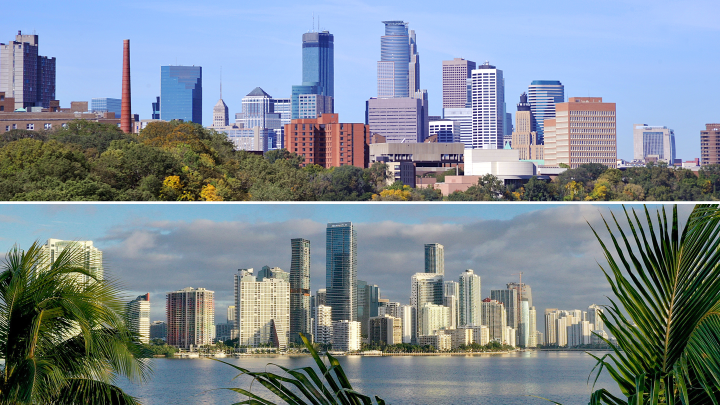
Inflation is different depending on where you live

While we often talk about inflation from a national standpoint, in a country of more than 300 million people with a lot of economic diversity, there’s a big difference in what happens in one U.S. city versus another.
For example, prices over the last year rose just 1.8% in Minneapolis. Compare that to Miami, where inflation is at a whopping 9%. In this case, it really is a tale of two cities.
Despite inflation clocking in under the Federal Reserve’s 2% target rate, “I wouldn’t say [it’s] necessarily the best of times” in Minneapolis, said the University of St. Thomas’ Tyler Schipper. “We still need especially those food prices to come down.”
But he does say these are better times. “The misery index of unemployment plus inflation is definitely way down from where it was a year to year and a half ago.”
The biggest reason why? “It’s still much more affordable to rent and own a home in our region,” said Peter Frosch, CEO of Greater MSP Partnership — which promotes the Twin Cities’ economy.
Fewer people are moving to Minneapolis compared to other places, he said. That’s keeping demand lower.
Plus, “every year since 2019 our region has surpassed our goal of creating at least 18,000 new housing units in the rental space,” he said.
It’s a different picture in the oceanside destination city of Miami. Lots of people moved there when pandemic restrictions were lifted.
“We also have better weather conditions, which attracts even more people to Miami,” said Florida International University economist Hakan Yilmazkuday.
Many of these new buyers are paying in cash — no mortgage needed. “Which means that they are not affected by any increase in the interest rate,” Yilmazkuday said.
Price hikes for clothing and food are steeper in Miami, which has affected him personally. “That’s why we started cooking [at] home more.”
Miami may not be in the worst of times, but it’ll take more than monetary policy to address its challenges.
There’s a lot happening in the world. Through it all, Marketplace is here for you.
You rely on Marketplace to break down the world’s events and tell you how it affects you in a fact-based, approachable way. We rely on your financial support to keep making that possible.
Your donation today powers the independent journalism that you rely on. For just $5/month, you can help sustain Marketplace so we can keep reporting on the things that matter to you.











